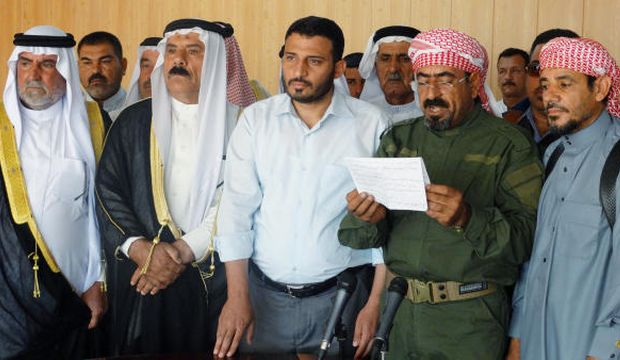The Islamic State of Iraq and Syria (ISIS) takeover of Ramadi, the largest city and the administrative center of the Anbar governorate in Iraq, is not the first incident that raises questions about the ultra-radical group’s bizarre nature and the way it operates. ISIS is in control of wide swathes of Iraqi and Syrian territory along the border of Jordan, Saudi Arabia and Turkey and is fighting on multiple fronts. Its growing influence gives the impression of a superpower with an army as big as that of China or as advanced as that of the US.
However, recent reports have suggested that ISIS fighters number no more than 20,000–30,000. How can an organization with such a modest number of fighters control such a large territory, particularly given the fact the US and its allies have been carrying out airstrikes against the group for nearly a year?
The mysterious group has fought many of its battles with no more than a few thousand fighters, entering supposedly fortified cities, as professional armies, heavily equipped with state-of-the-art military kit, retreated. In Ramadi’s case, Iraqi politicians had long warned of an ISIS attack on the city, claiming that the Islamist group had recently transferred around nine thousand of its fighters from Syria to Iraq in order to beef up its operations in Anbar and capture its capital. The group itself did not hide its intention to attack Ramadi: one of its leaders announced plans to move the battle to Iraq in a propaganda speech posted online, claiming that it was a far more significant prize than Syria.
The news has raised several question marks about the group’s ease of cross-border movement despite the extensive sorties and the monitoring and intelligence operations of the US-led international coalition. The revelation has led to speculation about ISIS’s future plans, that it will make Anbar its main battlefield, while leaving the entire scene in Syria to the Fatah Army and Al-Nusra Front.
The fall of Ramadi could have been averted had there been some sort of understanding between the central government and Anbar’s Sunni tribal leaders, who demanded weapons to deter ISIS in the same way they dealt with Al-Qaeda eight years ago. In fact, back then, tribal fighters managed to push Al-Qaeda out of their areas after Washington and Baghdad had failed to do so, in fierce battles such as the ones that took place in Fallujah. The government of Haider Al-Abadi did not respond to their calls and declined to comply with the US Congress decision to distribute US weapons directly to the Kurds and Sunni Arabs due to pressure from Shi’ite blocs.
There is much speculation surrounding the reasons behind the attitude of Abadi’s government. Some have said that the government opposes handing out weapons on a sectarian basis, or out of fear for national unity. Others argue that only the government should have access to weapons.
Such reasoning would have been acceptable had it been reflected in reality. Instead, the government and some affiliated factions continue to cooperate with an array of Shi’ite militias operating under the Popular Mobilization forces, whose fighters are flooded with weapons and support from Iraq and Iran.
The government’s double standards add more fuel to the fire of sectarianism that is consuming Iraq and further antagonize the country’s Sunni population, which feels it is being marginalized. This will perhaps push more Sunnis to turn a blind eye to ISIS’s advances or even consider joining the radical group’s ranks. The current atmosphere in Iraq is dominated by political bickering, sectarian fears and suspicion—and talk of divisions is becoming normal.
Under these circumstances it is hardly surprising that the fall of Ramadi has generated many conspiracy theories. Government supporters—who had been trying to reassure people that the regular forces and Popular Mobilization forces had been taking the initiative against ISIS following the liberation of Tikrit—explained the fall of Ramadi by accusing Sunni tribes of facilitating ISIS’s entry into their city. On the other side, there are some who think ISIS is being used as a cover for Iran’s growing influence in Iraq. They claim that the Islamic Republic has been extending its influence in Iraq with the tacit knowledge of Washington who has provided it with aerial cover in the name of fighting terrorism. Others considered the fall of Ramadi another step in a plot to divide Iraq, arguing that it would deepen sectarianism and play into the hands of those who advocate a three-state solution. These voices claim that the Kurds may take advantage of the current situation to hold a referendum on independence.
The fall of Ramadi remains as puzzling as the constant spread of ISIS. But what is certain is that Iraq is heading towards disintegration and division.
